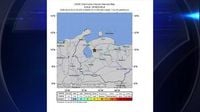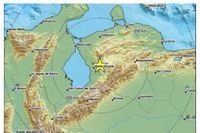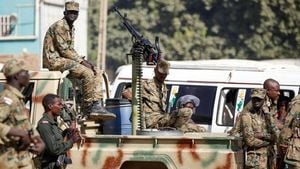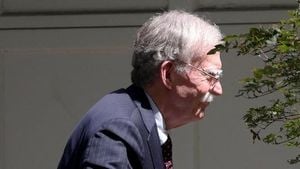On the evening of September 24, 2025, the ground beneath western Venezuela shook violently as a powerful earthquake, registering a magnitude between 6.2 and 6.3, struck the Zulia state. According to the U.S. Geological Survey, the quake’s epicenter was located about 15 miles (24 kilometers) east-northeast of Mene Grande, a region known for its oil-rich lands, and roughly 370 miles (600 kilometers) west of the capital, Caracas. The tremor’s depth was measured at around 5 miles (7.8 kilometers), though some local reports placed it deeper, at 35 kilometers. The timing—18:21 local time—caught thousands off guard, sending shockwaves through both the physical landscape and the daily routines of Venezuelans and neighboring Colombians alike.
As reported by The Associated Press, the earthquake was felt in several Venezuelan states and across the border in Colombia. Residents in cities near the epicenter, including Ciudad Ojeda and Maracaibo, rushed out of buildings as the ground rumbled beneath their feet. Office workers and families alike evacuated residential and commercial buildings, their anxiety heightened by memories of past seismic events. The tremors, which some described as lasting longer than expected, left many shaken but, at least initially, grateful that there were no immediate reports of casualties or widespread destruction.
Yet, as the dust settled and emergency inspections began, the true toll of the earthquake started to emerge. Multiple news outlets, including Atalayar, documented significant damage to vital infrastructure. Hospitals, a cornerstone of any community’s emergency response, were not spared. The Luis Razetti Hospital in Pueblo Nuevo suffered structural damage that compromised its ability to function at full capacity. Meanwhile, the Hospital General del Sur in Maracaibo experienced electrical system failures, hampering medical care during a crucial window when the injured might need immediate attention. Authorities scrambled to implement temporary repairs and restore critical services, all while preparing for potential aftershocks.
The cultural heart of Maracaibo also took a hit. The Santa Bárbara Church, a cherished symbol for the local community, lost part of its tower during the quake. The damage to this religious building resonated deeply with residents, prompting calls for urgent repairs—not just to restore a place of worship, but to mend a piece of the community’s spirit. "The restoration of this church is not only a matter of infrastructure, but also of preserving the cultural and religious heritage of the locality," local leaders emphasized, according to Atalayar.
Transportation infrastructure faced its own challenges. Emergency inspections revealed cracks in the San Pedro bridge in Baralt municipality, raising concerns about the safety and reliability of key routes needed for aid delivery and daily commutes. Technicians and civil protection teams moved swiftly to assess the bridge’s stability and to ensure that other roads and access points remained operational. The safety of these routes was essential, not just for immediate relief efforts, but for the broader recovery of the region.
Social media played a pivotal role in shaping public awareness and response. Images and videos of cracked streets, damaged buildings, and frightened residents circulated widely, amplifying both the sense of urgency and the call for solidarity. Testimonies from those who experienced the quake firsthand painted a vivid picture of chaos and resilience. "This recently detected earthquake has caused considerable damage to vital infrastructure, affecting both public and private buildings and significantly disrupting the daily lives of thousands of Venezuelans in the affected region," reported Atalayar, summarizing the widespread impact.
Despite the mounting evidence of damage, the Venezuelan government’s initial public response appeared muted. State-owned television, including a science-focused segment led by President Nicolás Maduro, continued uninterrupted during and after the earthquake. An hour after the quake, Communications Minister Freddy Ñáñez took to the Telegram app to announce that the Venezuelan Foundation for Technological Research had recorded two smaller quakes—of magnitudes 3.9 and 5.4—in Zulia and Barinas states, respectively. Curiously, he did not address the larger 6.2 magnitude event confirmed by the USGS, leaving some residents puzzled and seeking more detailed official information.
In the aftermath, local and national authorities declared states of emergency in the hardest-hit areas. Coordination between civil protection teams, seismology specialists, and local governments became the order of the day. Their immediate priorities included distributing resources, conducting detailed inspections of buildings and infrastructure, and providing assistance to those most affected. International organizations were also contacted for technical and financial support to aid in the rehabilitation of devastated areas.
Preventive measures quickly followed. The government urged citizens to stay informed, to prepare emergency kits with essentials like water, food, and first aid supplies, and to follow established safety protocols. Building codes were reviewed and updated to ensure that new construction could better withstand seismic events. As one civil engineer involved in the response explained, "Collaboration between engineers, architects, and authorities is crucial to ensure that new constructions meet the necessary safety standards."
Educational campaigns and emergency drills were rolled out in schools and communities, aiming to foster a culture of preparedness. Residents were advised to secure heavy objects in their homes, keep evacuation routes clear, and avoid using elevators during tremors. "Education on safe practices during and after an earthquake is essential to reduce the risk of accidents and ensure the protection of all members of the community," noted a spokesperson for the civil protection agency.
For many in Zulia and neighboring regions, the earthquake was a stark reminder of the seismic risks inherent to this part of South America. Mene Grande, near the epicenter, is not only a hub for Venezuela’s oil industry—home to the world’s largest proven oil reserves—but also a region vulnerable to natural disasters. The economic implications of infrastructure damage in such a strategic area added another layer of complexity to the recovery efforts.
As the days progressed, the focus shifted from immediate relief to long-term resilience. Community leaders, engineers, and residents alike recognized the need for sustained investment in disaster preparedness and infrastructure upgrades. The restoration of hospitals, bridges, and cultural landmarks became both a practical necessity and a symbol of the region’s determination to recover and adapt.
Western Venezuela’s recent earthquake has underscored the importance of vigilance, rapid response, and community solidarity in the face of natural disasters. While the scars—both physical and emotional—will take time to heal, the collective effort to rebuild and prepare for the future offers a glimmer of hope amid the rubble.





